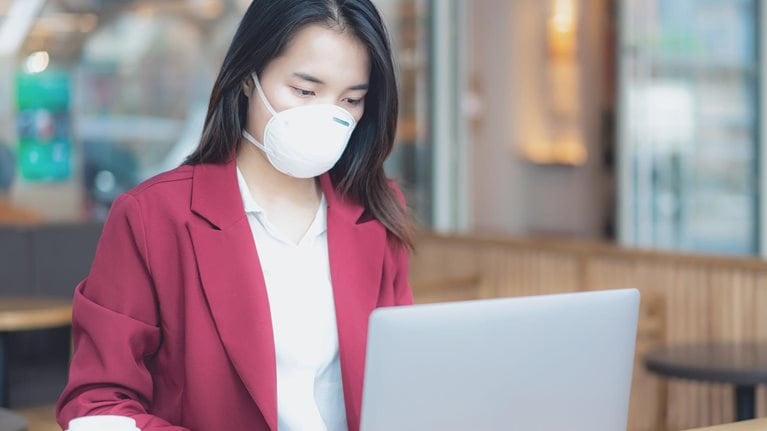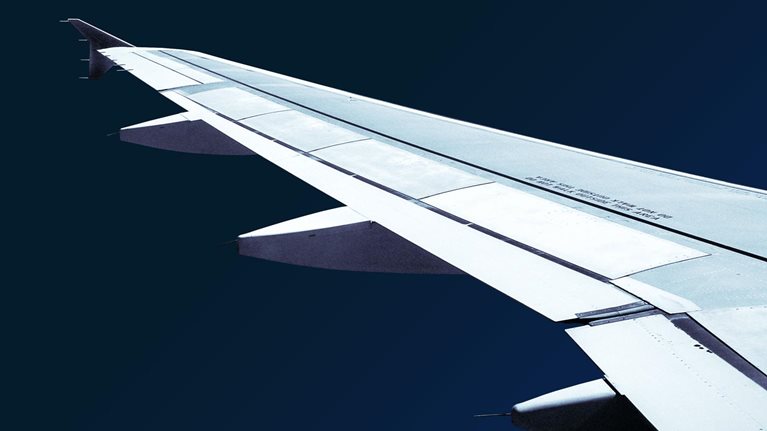China’s COVID-19 lockdown has ended, and travel is tentatively restarting. In this article, we look at how it has recovered so far, what Chinese travelers think about their future travel, and how industry players are responding to these trends. Countries and regions around the globe are gradually moving past the peak of the pandemic. We hope that China’s experience can shed light on what other countries can—and cannot—expect for their own travel recoveries.
How tourism in China is restarting
Mainland China’s lockdown is over; new domestic reported cases of COVID-19 are practically zero. Businesses remain cautious, but almost all offices, factories, schools, and retail outlets have reopened. So have most tourist attractions. Our recent China consumer-sentiment survey shows that confidence is coming back: more people feel safe returning to work than did just two weeks ago.1
When a lockdown ends, the first thing people want to spend money on is eating out. The second is travel.2 Our consumer survey shows that confidence in domestic travel rose by 60 percent over the past two weeks. The number of travelers for the recent May Labor Day long weekend was down 53 percent from 2019, but that represents a recovery from the April long weekend, when travel was down by 61 percent. (Exhibit 1).

At present, travel is entirely domestic; international borders remain closed. China has imposed a 14-day quarantine (in homes or government facilities) for every person coming from overseas. International flights are capped at one a week per airline and country: a more than 90 percent drop in seat capacity from precrisis levels. Hotel occupancy and domestic-flight capacity are rising gradually (Exhibit 2). But this kind of travel differs from precrisis norms in several important ways.

Domestic, even regional
Travelers are still cautious. They prefer to stay close to home—choosing, for example, to drive or take trains to regional destinations. Flying for leisure trips has recovered more slowly, which is reflected in the top destinations for the Labor Day long weekend.3 Last year, the top spot was Sanya—China’s equivalent of Hawaii, a resort area on Hainan. To get to Sanya you must fly there. This year, Sanya does not even feature in the top ten destinations. Shanghai, Guangzhou, and Beijing are the top three. “Staycations” are popular too (Exhibit 3).

Our consumer-sentiment survey supports this finding: confidence in the safety of domestic travel by car, even over distances of more than three hours, is high.
Younger travelers
COVID-19 has the most severe impact on the elderly and on people with underlying medical conditions. Not surprisingly, the young and the nonfamily segment are more open to resuming travel in the first wave after the crisis (Exhibit 4). On Tomb Sweeping Day, the first holiday following the pandemic, 60 percent of the people who booked trips were below the age of 30—a significant increase from 43 percent in the same period last year.

Economy product without sacrificing comfort
The changing traveler demographics and the overall economic situation are also reflected in spending patterns. Midscale and economy hotels did relatively well during the crisis. Now they are rebounding more quickly (Exhibit 5). A Ctrip survey indicates that 85 percent of travelers in China said they would spend less than CNY 10,000 on travel this year, compared with only 27 percent in 2017.4 Luxury hotels, hit not only by the new spending pattern but also by the lack of inbound international business travel and conference demand, have been slowest to recover.

Yet this new frugality does not necessarily mean that travelers are wholly sacrificing the quality of the travel experience for lower prices. McKinsey’s survey on COVID-19 travel sentiment shows that the top two types of accommodations Chinese travelers prefer now are international economy hotel chains and local boutique hotels, which are usually perceived as combining reasonable prices with comfort.
What’s coming next?
Our China consumer-sentiment survey and observations of the market have revealed four trends along the recovery path.
Peak recovery after September
According to our survey, a few intrepid people expect to be traveling in early summer, but the majority of respondents do not plan to venture far until the National Holiday, in late September and early October. Most travelers regard announcements from experts (54 percent) or the full reopening of schools (54 percent) as the most reliable indications of when to take the next leisure trip (Exhibit 6).

Outdoor, foodie, and family
Travelers remain cautious; they prefer to avoid crowded tourist spots. Outdoor scenic attractions are the most popular destinations for future travel. Food and family-themed destinations (a top three choice) also remain popular. Shopping has dropped to the bottom of the popularity list. The vast majority of travelers see their next trip being domestic, and most are planning to leave their home region (Exhibit 7).

Self-guided and self-driven tours become dominant
Group and guided-tour packages have dramatically declined in popularity: our survey shows that only 10 percent of travelers would be likely to take big group tours for their next trips. Sixty-eight percent regard them as impossible even to consider. This is a fundamental shift. Chinese travelers have long been fans of guided group tours, which offer convenience and ease of travel, especially abroad. But consumers now appear to be balancing these virtues against concerns for their safety in larger groups.
For people who do choose group tours, small groups of fewer than ten people are preferred—31 percent said they would be likely to choose them as an option, nearly three times the percentage in 2019 (Exhibit 8).

Cruises were a nascent and recently booming business in China before the pandemic. Their recovery path, along with the loosening of international travel restrictions, is unclear.
How Chinese players are responding to these emerging trends
The key thing for rebuilding demand for travel is to reassure customers that it is safe. Consumer sentiment in China shows that travel providers cannot do too much to implement safeguards to ensure hygiene.
Ensuring physical distancing and improving hygiene
Tourist sites, including theme parks, have reduced crowding by capping their entry levels at 30 to 50 percent of previous levels. To control capacity, they have introduced preregistration schemes, even for city-level public parks. On entry, visitors must show a green QR code, issued by the government (and based on previous travel histories and potential exposure to the virus).
Hotels too have modified their procedures—for example, by closing buffets and increasing the distance between tables in restaurants. Staff all wear personal protective equipment (PPE); some hotels even require it for guests, while others only encourage it. Many hotels have switched off their air conditioning and closed their gyms and indoor swimming pools.
On flights, all magazines and newspapers have been removed. For food and beverages, travelers get packaged snacks and bottled water. Airports check temperatures both when passengers arrive and right before they board their flights. A health QR code is required for check-in and, in certain destination airports, after landing. Some airlines have also launched new ancillary products catering to emerging customer demand—for instance, one-off lounge passes and extra fees to keep adjacent seats free.
Aggressive pricing promotion
Airlines, hotels, tourist attractions, and online travel agencies (OTAs) are proactively promoting their offerings to stimulate demand and generate income. According to Fliggy (one of China’s leading online travel-booking platforms) airline-ticket prices were 30 percent lower for Labor Day—a traditional peak season—than they were last year. Hotels and OTAs are sending out presale deals: a two-night stay at one five-star hotel in Shanghai can cost as little as CNY 999 (Chinese yuan, or renminbi) and be redeemed anytime until the end of June.
Engaging customers through latest social media
WeChat and Weibo (China’s equivalent of Twitter) are no longer emerging channels but rather “must haves” for travel businesses. After the pandemic, younger people have been more interested in travel than older ones, so leading travel players have started to engage these customers through new channels, such as Taobaolive and TikTok. To introduce travel destinations and deals, CEOs have started to act as hosts on livestreaming platforms. This new type of marketing seems to pay off, at least for some players: in the latest livestreamed marketing campaign by James Liang, founder and chairman of Ctrip, 10 million CNY of travel products were sold out within an hour of the broadcast.
What can the world learn from this?
Although the recovery will differ country by country, we do see common themes. People still want to travel. Many are calling this “revenge travel”: bookings for cruises in the United States—arguably one of tourism’s hardest-hit sectors—remain strong for 2021. The international survey results resemble what we see in China. Domestic travel will return first. International travel, especially if it involves flying, will take much more time to recover. The travel sectors of countries that lack large domestic markets will recover more slowly and may open up first to travelers from nearby countries.
We think that travel will return in other countries much as it has in China. The young will go first. Travel will involve nearby destinations. Economy travel will recover more quickly. And outdoor and nature-related destinations will be more popular than congested cities.
To capture early demand, travel-industry players must redeploy their resources quickly to the markets that recover first—domestic and regional ones. Processes and products need to be modified. Self-service, physical distancing, and new cleaning protocols will not only safeguard the health of customers and employees but also help restore consumer confidence, thus laying the foundation for the recovery of long-haul international trips. Last but not least, product features, communications, and sales channels must be retailored to match a changing customer mix: millennials and members of Gen Z are replacing baby boomers.
Travel will return. By acting early and flexibly, companies can better adapt to the changing needs of travelers. China’s early signs of recovery provide useful lessons for the whole travel industry.


